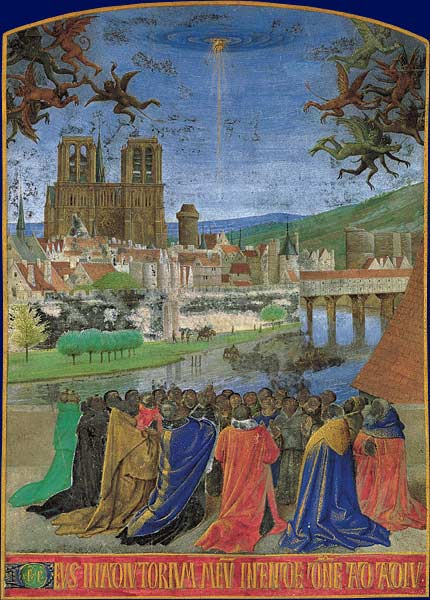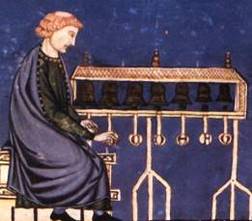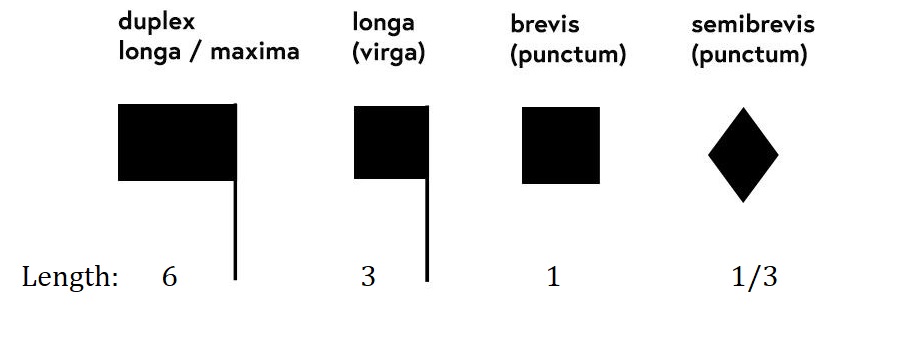
So far we have looked at Gregorian chant and Organum style. This period is also called the Early Middle Ages.
Now, let’s take a look at the next period in music history the middle part of the Middle Ages, also called Ars Antiqua. in this article. It refers to a period in European music history, from about 1150 – 1320, characterized by the development of polyphony. The center of this development was the Notre Dame in Paris.
The first important thing is that the center of European culture shifted. Until now, the center of culture was the many monasteries in the countryside. Scholars became monks and studied quietly every day. Studying could only be done inside the monasteries. However, this changed from the middle part of the Middle Ages. From now on, the place where people could study changed to town churches. This was an important event in history.
During this time, large cities were born all over Europe: Paris, London, Cologne, etc. The security situation in Europe gradually improved, and the economy grew thanks to the development of agriculture and trade. As each city became wealthy, they competed with each other to see who could build the largest church.
The center of music is the Notre Dame Cathedral in Paris (1163).
Two famous composers worked here, you could see them as the first composers of Western music. During this period, rhythm in particular changed dramatically.
Ars Antiqua (about 1150-1300)
Ars means arts, and Antiqua means old. So Ars Antiqua literally means “old art”. It’s a name that was thought up by people in later times, but people at the time were creating new music, not old music.
I sometimes imagine Paris in the 12th century, with new houses constantly being built, people from all over the world gathering, Notre Dame growing a little bigger every day as it was under construction, and scholars gradually creating new art. I imagine the energy in the town must have been incredible. If I could time travel, I would love to go there.
As mentioned earlier, in the 12th century, the center of learning shifted from monasteries to towns. Scholars from all over Europe gathered, particularly at Notre Dame de Paris. This became the basis for the current University of Paris. Gregorian chants and Organum were sung every day in this cathedral. Paris was and still is a city of the Arts.
The first two composers

The first two composers: Léonin (Leoninus) and Pérotin (Perotinus)
The names of the composers of Gregorian chants and organum up to now are unknown. It is because God is more important than man. Music was the voice of God. It was unthinkable for a composer to write his name under the work. Music was God’s creation.
However, times were changing. As the town became the center, composers’ attention shifted from God to humanity. Of course, they were deeply religious, but little by little, it became important for music to express human feelings (about love and life etc.). The music created by musicians at Notre Dame Cathedral gradually began to tell everyday stories. The attention and focus shifted from God to humanity.
Léonin (1150-1201), active from 1160-1180
Léonin was the first important composer at Notre Dame Cathedral. He was a master of two-voice organum. Some characteristics in his works are:
- The tenor sings Gregorian chant (Cantus Firmus) in long sustained notes.
- The upper voice (called: duplum) is a newly composed melodic line and moves freely above the tenor.
- The freely moving melody is called “melisma .” Several notes are sung for each syllable of the lyrics.
Leoninus is best known for composing the Magnus Liber, a set of organum pieces for the Mass and the Divine Office/Opus Dei (the daily prayer of the Church)
Pérotin (Perotinus) , active from 1180-1230
Pérotin was Léonin’s most talented student.
Like his teacher, he wrote two voice organum pieces, but he also wrote for three or even four voices.
(Organum Triplum for three voices, Organum Quadruplum for four voices) .
But the biggest difference is the rhythm. In his works the rhythm changes dramatically.
The impact and effect of the music is incredible.
I wonder how it sounded to the people of Paris at the time… were they shocked by hearing this?
Notre Dame School
These two musicians are known as the “School of Notre Dame.” Leoninus’s works were more improvisational and free-flowing. But Perotinus’s works had more voices and are more complex. So if the rhythm wouldn’t be precisely notated, the performance would fall apart. That’s why rhythmic patterns called “rhythmic modes” were created.
Rhythm Mode
The rhythm of Gregorian chant was originally quite free, but from 1200 onwards, composers created and used six different rhythmic patterns. Perotinus was a representative composer of this new musical style. The rhythmic patterns are called “rhythmic modes.”
All modes are in ternary rhythm. Ars Antica only has works in ternary time. The number 3 has religious significance. (Holy Trinity)
When the piece is going to be performed, the rhythmic mode which is specified at the beginning of the piece is going to be repeated.

Mensural notation
From the mid-13th century, a method was devised to indicate the length of a sound using notes rather than rhythmic modes. It can describe precisely rhythmic durations in terms of numerical proportions amongst note values. This is the beginning of our modern rhythmical notation.

